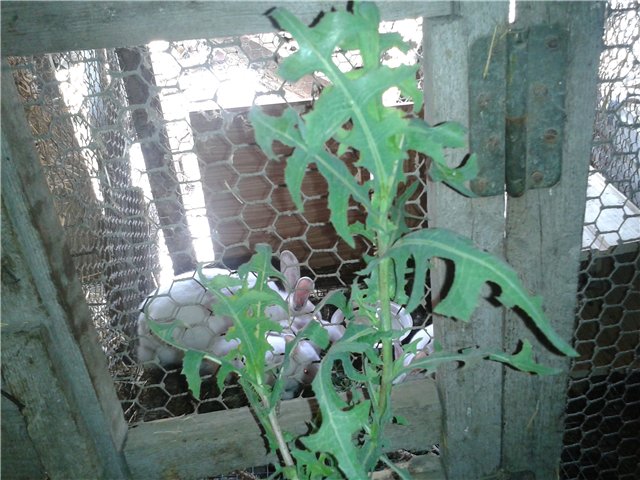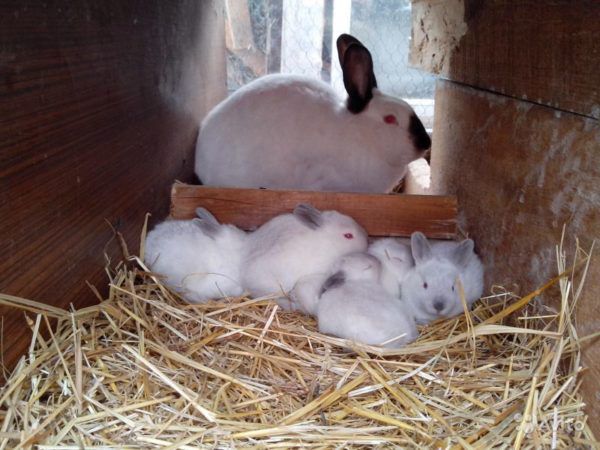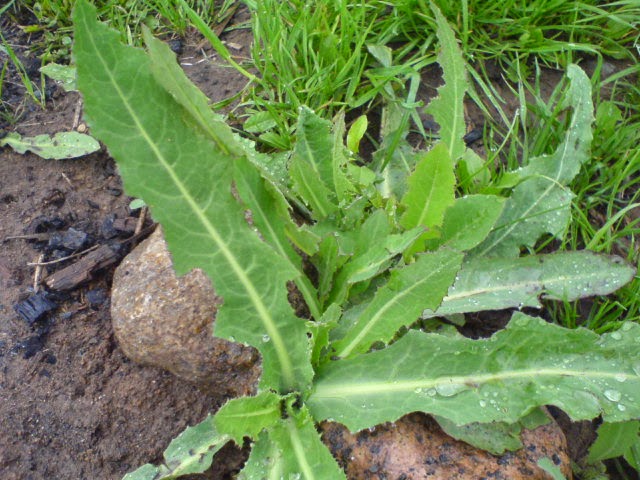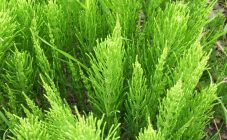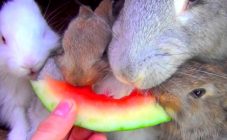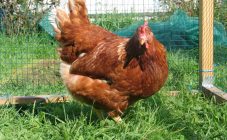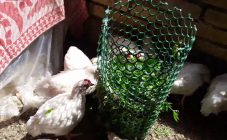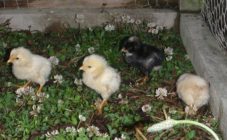Content:
Rabbit breeding occupies a strong position among other types of farm animals. The dietary properties of meat and light, fluffy, warm skins make them highly valuable objects in the market. Breeding of decorative rabbits as pets is gaining popularity.
Feeding features
In any case, it is necessary to follow a well-designed scheme for caring for animals, provide them with proper conditions of detention and be ready to feed the livestock.
In natural conditions, rabbits get their food by grazing in the meadows. The gastrointestinal tract of these animals is adapted for the constant process of digestion. In the absence of nutritious food and fresh grass, individuals begin to lose weight and become ill. In this regard, when keeping rabbits, the basis of their diet should be a variety of fresh juicy grasses. It is best to use wild herbs instead of store-bought mixes.
The optimal diet consists of the following herbs: burdock, clover, and dandelion. However, you should be wary of some plant species. For example, you can safely give only young shoots of quinoa and in small quantities. An increase in the percentage of quinoa in the diet can lead to hyperdevelopment of the intestinal microflora, which will lead to bloating and impaired digestion.
Currently, there are conflicting data on the possibility of including some wild herbs in the diet. One of them is the spurge.
Euphorbia, or Euphorbia, belongs to one of the most numerous genera of the plant world. It has over 2000 plant species. Among them are both herbaceous forms and shrubs and trees. About 160 species are distributed on the territory of the Russian Federation.
Euphorbia: benefit and harm
All these different forms of vegetation are united by the content of a poisonous substance in the juice, the basis of which is euphorbin. In addition, rubber, resins and gum are found in fabrics.
Despite the presence of such substances, milkweed is typically used for medicinal purposes. In folk recipes, it is used as an emetic and laxative. Tinctures on various parts of the plant are popular. They have a beneficial effect on the onset of headaches, hemorrhoids and fungal infections. Milkweed juice can be used to treat ulcers and edema.
Can euphorbia be given to rabbits? Controversial is the statement about the permissibility of eating milkweed by rabbits. It is known that euphorbin has the following effects on the body of animals:
- irritation and inflammation of the mucous membranes;
- disorder of the digestive processes;
- diarrhea and vomiting;
- violation of the normal functioning of the heart muscle;
- the development of seizures.
When observing such symptoms, milkweed poisoning is noted, the absence of treatment of which leads to death of individuals.
However, the content of the toxic substance varies, depending on the area of growth and the species of the plant. Some species contain a small amount of euphorbin, which does not lead to the manifestation of toxic effects.
It is believed that feeding milkweed leaves to rabbits during lactation leads to an increase in their milkiness. However, there are safer herbs for increasing milk production: alfalfa, clover, potatoes, or nettles do a great job.
In addition, adults, in contrast to young animals, are less sensitive to the toxic component than young rabbits.
Thorough preliminary drying of the harvested green parts of the plant leads to a decrease in poison. During the drying process, some of the toxic substances evaporate along with the water. However, the residual amount of them in the dried plant remains unknown.
Is it possible to give euphorbia to rabbits
Conflicting data do not give an unambiguous answer to the question "Is it possible to feed rabbits with milkweed?" The presence of a toxic component imposes restrictions on the process of feeding only with this type of plant. However, many livestock breeders believe that choosing a certain type of milkweed can avoid negative consequences.
At present, there is no exact empirical data on the percentage of euphorbin in different plant species. It is impossible to initially predict the strength of the toxic effect of the selected species. Therefore, there is a danger of choosing the wrong species and getting massive poisoning of the livestock. In this regard, the choice of milkweed as a food component remains at the discretion of the farmer.
Euphorbia often grows in meadows. In the process of mass harvesting of green herbs for the winter period, it is not necessary to remove it from the total mass of collected herbs. Dried and being one of the components of hay, it will not have a clear negative effect on the vital activity of rabbits. A small amount of milkweed will be compensated by being caught among the abundance of other assorted herbs.
In addition, you can reduce the concentration of euphorbin by pre-drying the hay. However, it remains unknown how much poison was left in the greenery. Despite the fact that in this case the spurge will be part of the forbs, a species with a high concentration of toxic substances may be caught, which will lead to poisoning, leading to the death of individuals.
Some farmers insist on a small presence of milkweed in the diet of mature adults. It is believed that only a young and weak body will not be able to cope with the incoming substances. However, this risk may not be economically justified. If an adult herd dies, the farm will incur large losses.
The difference between milkweed and sow thistle
Representatives of the genus milkweed are described as plants with alternately sessile leaves, serrated at the edges or whole-edged. Flowers contain both male and female reproductive organs. The pericarp consists of 3-5 fused leaves. The number of stamens coincides with the number of accrete parts of the pericarp. The ovary consists of two to three sessile nests. The fruit of the plant is a capsule, rough to the touch. Leaf tissues contain a milky-white sap with a bitter taste with a pronounced toxic effect for farm animals.
In the process of collecting herbs, especially in the field, you can find a plant similar to milkweed. This is a type of field or garden sow thistle. Due to its appearance similar to the milkweed, it is called so "milkweed" or "milkweed". This plant is widespread everywhere. It is especially common in the garden, being a malicious weed.
Sow thistle leaves are dense leaf blades with spines or serrated edges. They contain the same milky-looking juice.Small flowers are collected in baskets. The fruit is a grayish-brown achene with a tuft of white hairs. The root of the plant is located close to the surface of the earth. Unlike milkweed, thistle is a good honey plant. It is used as a folk remedy for neuroses, diseases of the cardiovascular system, migraines and other diseases.
Eating this plant does not cause digestive problems in rabbits and does not carry consequences in the form of poisoning. Feeding a sow thistle will help get rid of its weedy activity in the beds.
Is it possible to feed rabbits with a thistle
Can sowthrow be given to rabbits? Sow thistle is a beneficial and nutritious plant for rabbits. It is well absorbed and does not cause a negative effect on life processes. At the same time, using it as the only source of green fodder is unacceptable. Such a diet will be unbalanced and lead to pathological processes.
Adding sow thistle to herbal mixtures can help fill in vitamin, carotene, inulin, or choline deficiencies. Sow thistle has a general strengthening effect on the body, supporting the immune system and strengthening blood vessels. In addition, a clear anthelmintic effect of the plant on the animal organism was noted. Thus, thistle is an excellent option for replenishing vitamin deficiencies, helping to strengthen the body of rabbits.
Instead of milkweed, you can include a plant similar in appearance to the rabbit diet - sow thistle. Due to external similarity, he is credited with the name "Euphorbia". However, unlike real milkweed, thistle is a plant useful for rabbits. Adding it to the diet allows you to carry out preventive anthelmintic activities and maintain the general condition of the body. Naturally, it is not recommended to make a diet of one sow thistle, since the lack of a variety of food can provoke an imbalance in the digestive system.
